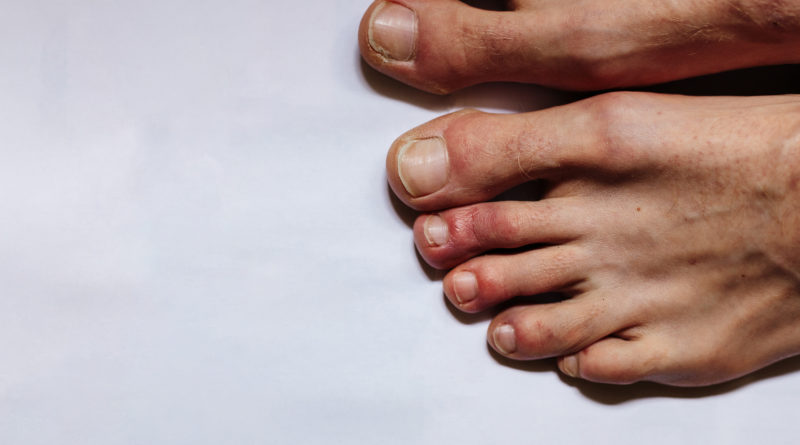What Are “Covid Toes”?
1,255 total views, 1 views today
Recently, the Centers for Disease Control and Prevention (CDC) expanded its list of official COVID-19 symptoms from three to nine. This change showcases one of the virus’s defining traits: It can cause an unusually large number of symptoms, the severity and presence of which can vary drastically by case. In fact, shortly after the CDC expanded its official list of symptoms, reports began emerging of another concerning potential COVID-19 symptom, a condition often described as “Covid toes.”
“Covid toes,” scientifically known as chilblains, were extremely rare prior to COVID-19. One dermatologist claimed to see only four or five chilblain cases per year before the pandemic, but now, she has seen dozens in just a few weeks. Another dermatologist who belongs to the American Academy of Dermatology (AAD) COVID-19 task force similarly claimed that she has seen more toes in a recent two-week period than she had during her entire dermatological career. Making matters more concerning is that chilblains tend to occur during winter rather than spring, meaning their presence may well be linked to COVID-19.
Recent spikes in complaints about chilblains and other painful toe lesions have been reported in medical papers from Spain, Belgium, and Italy. In almost all cases reported, Covid toes occurred in patients showing few to no other COVID-19 symptoms. Some experts have suggested that chilblains and toe lesions represent a healthy immune system response to COVID-19. It thus remains unclear whether Covid toes represent a direct manifestation of SARS-CoV-2, the virus that causes COVID-19, in the skin or simply the result of an immune system working overtime to keep the virus at bay.
Dermatologists have reported that Covid toes tend to go away on their own without much effort. Some scientists believe Covid toes may also arrive several weeks after what would normally comprise the acute phase of a COVID-19 infection, but since most Covid toes occur in people with mild or no other symptoms, more research needs to be done to support this conclusion. Regardless of when Covid toes manifest, dermatology experts agree that toe lesions signify a positive immune response to SARS-CoV-2 infection.
Other skin conditions may signify a positive immune response to SARS-CoV-2 infection as well. Skin rashes resembling hives or larger flat or raised lesions on other parts of the body may also indicate COVID-19. As with Covid toes, scientists remain uncertain about the exact biological mechanism and meaning of these skin conditions. Some have theorized that rashes, hives, and other skin conditions may be COVID-19 complications, reactions to COVID-19 medications, or the result of COVID-19 existing in the body alongside another virus.
Medical experts advise people suffering unusual skin symptoms to avoid emergency room visits unless instructed by a doctor to go to the hospital. In emergency rooms, asymptomatic COVID-19 patients can easily spread the virus to other people, just as symptomatic people can spread it to people who aren’t yet infected. Instead, people with skin symptoms are encouraged to contact their primary care physicians or dermatologists to schedule a telemedicine appointment. Following this appointment, doctors and patients will decide what steps are necessary for treatment – and, as has long been advised, self-isolation.

